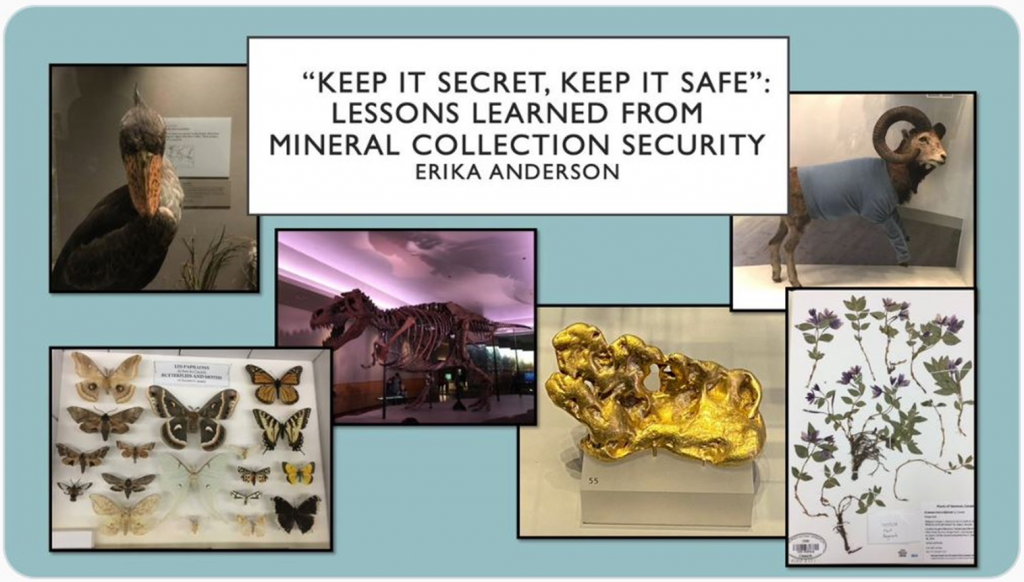Alex von der Becke attended the Society for the Preservation of Natural History Collections conference in Edinburgh and came back with these tips from Erika Anderson, Curator of Mineralogy at the Canadian Museum of Nature.
“Keep it secret, keep it safe”: Lessons learned from mineral collection security
Erika Anderson, Curator of Mineralogy at the Canadian Museum of Nature

Erika started her talk by emphasising the importance of liaising with security professionals and talking to experts, reminding us that there is never a “one size fits all” solution. She then broke down her advice as follows:
Value
Compared to some other natural history collections, minerals have an active market and some specimens can have a high value. This can range from just a few dollars to several million. But of course it’s not always just about monetary value: scientific value, cultural value, historical value are also important.
She then pointed out that our perceptions of mineral values can be misleading: we can overvalue some specimens that are of low value and vice versa. In order to accurately appraise them she therefore recommended going to mineral shows or checking out sale websites and publications.
Categories
As part of this appraisal, Erika suggested following the categorisation formula of Price and Fitzgerald (1996). This is arranged as follows:
Category 1: Primary Types, Extinct Species, Valuable Specimens
Category 2: Secondary Types, Historical Specimens, Rare or Endangered Species, Market Value >$10,000
Category 3: Vouchers, Market Value $1,000 – $10,000
Category 4: Identified Specimens, Market Value <$1,000
Category 5: Working collections
Need to know basis
Erika suggested knowledge of high value item locations should only be on a need to know basis. Knowledge of keys and codes should also be restricted and signage limited so that you don’t draw attention to valuable items. Furthermore, one shouldn’t mention the value of specimens if not pertinent.
Access
In terms of access to collection spaces, Erika recommended having a separate area for visitors. They should be escorted at all times, ensuring cabinets are kept locked. These can then be individually unlocked to show highlights and then locked again on a cabinet-by-cabinet basis.
When it comes to staff best practise, she also suggested not leaving out high value specimens for long times when working on them.
Good record keeping
Erika emphasised that accurate record keeping enhances security. If we have databases with relevant and up-to-date information then we can keep track of specimens more easily. It is also sensible to control access to certain information; not everyone needs to know what the specimen values are, for example, so that data can be blocked out for certain user groups.
Sharing on Social Media
Erika acknowledged that using social media is a great way to share collections but that one must be careful not to overshare. She suggested avoiding revealing your security measures. Depending on your level of security, you should also avoid putting high value specimens on social media and never disclose information regarding specimen transportation, especially in real time.
[…] Read Alex’s highlights from the SPNCC conference […]